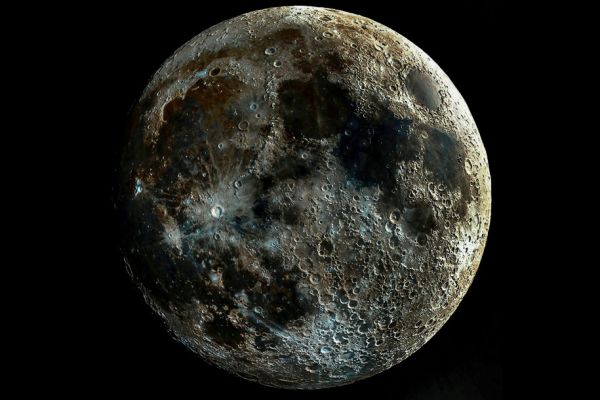New image captures 'impossible' view of the moon's surface
You've never seen the moon like in this 'all terminator' image (and you never will).
Shadows creep down the banks of every crater on the near-side of the moon, highlighting the pockmarked face of Earth's gravitationally-bound buddy with a clarity never before seen.
According to photographer Andrew McCarthy, who posted the stunning image to his Instagram in April, there's a simple explanation for the unprecedented level of detail in his work — this lunar view is actually "impossible."
"This moon might look a little funny to you, and that's because it is an impossible scene," McCarthy wrote on Instagram. "From two weeks of images of the waxing moon, I took the section of the picture that has the most contrast … aligned and blended them to show the rich texture across the entire surface."
Related: 12 Trippy objects hidden in the zodiac

The high-contrast section of the moon that McCarthy referred to is called the "lunar terminator" — the long line in the sand (or regolith, if you prefer) that divides the moon’s Earth-facing side between darkness and light. This terminator line moves around constantly depending on the phase of the moon, revealing or concealing new sections of the lunar surface each day. Because the terminator line heightens the contrast between the light and dark sides of the moon’s face, shadows look elongated and intensified in craters closest to the terminator.
With this in mind, McCarthy trained his camera on the craters closest to the lunar terminator every night for two weeks as the moon waxed toward complete illumination. By the time the moon was full, McCarthy had a series of high-contrast, high-definition photos of every crater on the moon's Earth-facing side. Blending them into a single composite image was "exhausting," he wrote, but ultimately resulted in the gorgeously detailed shot seen above — an image that McCarthy calls the "all terminator" moon.
This impossible composite can't really be considered a true photograph of the moon, but the finished whole certainly amounts to more than the sum of its shady-cratered parts.
Get the Space.com Newsletter
Breaking space news, the latest updates on rocket launches, skywatching events and more!
Editor's note: This article was updated on May 7 at 12 p.m. ET
A post shared by Andrew McCarthy (@cosmic_background)
A photo posted by on on Apr 14, 2020 at 6:48pm PDT
- The 15 weirdest galaxies in our universe
- The 12 strangest objects in the universe
- 9 Ideas about black holes that will blow your mind
Originally published on Live Science.
OFFER: Save 45% on 'How It Works' 'All About Space' and 'All About History'!
For a limited time, you can take out a digital subscription to any of our best-selling science magazines for just $2.38 per month, or 45% off the standard price for the first three months.
Join our Space Forums to keep talking space on the latest missions, night sky and more! And if you have a news tip, correction or comment, let us know at: community@space.com.

Brandon has been a senior writer at Live Science since 2017, and was formerly a staff writer and editor at Reader's Digest magazine. His writing has appeared in The Washington Post, CBS.com, the Richard Dawkins Foundation website and other outlets. He holds a bachelor's degree in creative writing from the University of Arizona, with minors in journalism and media arts. He enjoys writing most about space, geoscience and the mysteries of the universe.











